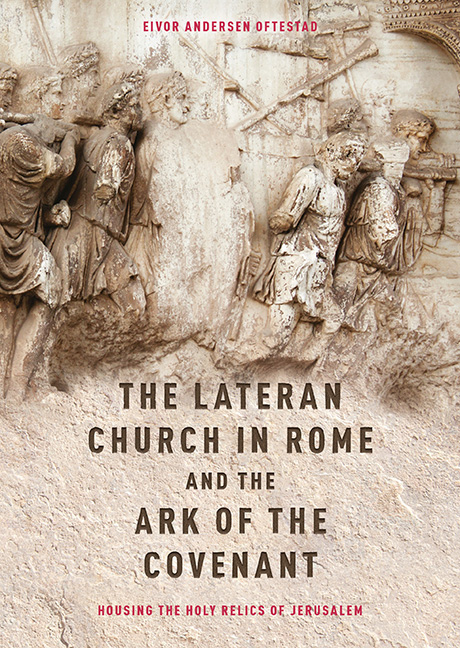 The Lateran Church in Rome and the Ark of the Covenant: Housing the Holy Relics of Jerusalem
The Lateran Church in Rome and the Ark of the Covenant: Housing the Holy Relics of Jerusalem Published online by Cambridge University Press: 31 August 2019
I do not have the gold of intelligence and the silver of eloquence, or the precious stones of virtue, I wish to offer Your Holiness, in memory of this sanctuary, ram skin depicted and rubricated …
Nikolaus Maniacutius: Historia Imaginis Salvatoris
The images in the Lateran Church and in the papal chapel showed who inhabited the sanctuaries. In a passionary preserved in Santa Maria Maggiore in Rome, we find a peculiar sermon concerning the most important image at the Lateran, which was the image of the Saviour in the oratory of San Lorenzo (c. 1145). The sermon is ascribed to Nikolaus Maniacutius and describes a vision of a most extraordinary procession of saints, confessors, martyrs and apostles, followed by the glorious mother of God, all of whom enter the papal chapel. The spectator, a penitent praying outside the chapel, is told by angels that what he is seeing is the return visit of the mother of God after her Son had visited her on the Feast of the Assumption. After the entrance of saints, a fire fills the palace as if it were being consumed by flames. The spectator is astonished and afraid, but the angels comfort him:
‘Don't be afraid. This is the glory of God who is about to enter.’ Comforted by their words, he then lifted his eyes and saw the glorious throne of the great God being lifted up by the angels of God, but he saw no one sitting on the throne. As soon as the doors of this holy basilica had been opened, he was led to the heavenly thrones.
The vision described by Maniacutius is clearly modelled on the visions of God in his temple described in the Old Testament, especially in Ezekiel's vision of the return of the glory of God to the new temple. Maniacutius’ description seems to correspond with the idea that the papal private chapel can be regarded as the Holy of Holies in the temple of the New Covenant.
In the passionary the sermon is placed between other texts connected to the dedication feast of the Lateran Church: ‘Legend on the Church of the Saviour’ (‘Legenda Ecclesie Salvatoris’), the legend about the miracle of Beirut (‘De Passione Ymaginis Domini Salvatoris’) and ‘The Vengeance of the Lord’ (‘Vindicta Domini’).
To save this book to your Kindle, first ensure [email protected] is added to your Approved Personal Document E-mail List under your Personal Document Settings on the Manage Your Content and Devices page of your Amazon account. Then enter the ‘name’ part of your Kindle email address below. Find out more about saving to your Kindle.
Note you can select to save to either the @free.kindle.com or @kindle.com variations. ‘@free.kindle.com’ emails are free but can only be saved to your device when it is connected to wi-fi. ‘@kindle.com’ emails can be delivered even when you are not connected to wi-fi, but note that service fees apply.
Find out more about the Kindle Personal Document Service.
To save content items to your account, please confirm that you agree to abide by our usage policies. If this is the first time you use this feature, you will be asked to authorise Cambridge Core to connect with your account. Find out more about saving content to Dropbox.
To save content items to your account, please confirm that you agree to abide by our usage policies. If this is the first time you use this feature, you will be asked to authorise Cambridge Core to connect with your account. Find out more about saving content to Google Drive.